Iran’s historical bazaars are vibrant, bustling marketplaces that have been the heart of commerce and social interaction for centuries. These bazaars are not only economic hubs but also rich cultural and architectural treasures, reflecting Iran's history and traditions.
Iran’s Historical Bazaars
Iran's historical bazaars are enchanting and bustling marketplaces that reflect the country's rich cultural heritage and centuries-old traditions. Each bazaar, with its unique atmosphere, offers a sensory experience filled with the aroma of spices, the vibrant colors of Persian rugs, and the lively sounds of traders and shoppers. These bazaars are not just marketplaces but living museums that provide a window into Iran's history, showcasing the artistry, craftsmanship, and daily life that continue to thrive in these dynamic spaces. Exploring these bazaars is like stepping back in time, providing a deep connection to the country's past while remaining an integral part of its present.
Tehran Grand Bazaar
The Tehran Grand Bazaar is a sprawling and vibrant marketplace located in the heart of Iran's capital city,Tehran. Covering an expansive area, this historical bazaar has been the center of commerce and trade for centuries, playing a crucial role in the economic and social life of the city. The bazaar is a labyrinth of interconnected corridors, each dedicated to different goods and services, ranging from spices, textiles, carpets, and jewelry to electronics, household items, and clothing. The diversity and abundance of merchandise available make it a shopper's paradise and a must-visit destination for both locals and tourists.
One of the defining features of theTehran Grand Bazaaris its stunning architecture, which reflects the rich cultural heritage of Iran. The bazaar is adorned with beautiful domes, arches, and intricate tile work that showcase traditional Persian design elements. As you wander through the bustling corridors, you'll encounter historic caravanserais, mosques, and bathhouses that add to the bazaar's charm and historical significance. The Grand Bazaar is not just a commercial hub but also a living museum that offers a glimpse into the city's past.
The bazaar is divided into several sections, each specializing in specific types of goods. For example, the gold and jewelry section are renowned for its exquisite pieces, while the carpet section offers a wide range of Persian rugs, known for their intricate patterns and craftsmanship. The spice market is a sensory delight, with the rich aromas of saffron, cinnamon, and other exotic spices wafting through the air. Additionally, the bazaar is home to various traditional teahouses and eateries where you can savor authentic Iranian cuisine, providing a perfect respite from shopping.
The Tehran Grand Bazaar is also a significant social and cultural center. It serves as a gathering place for people from all walks of life, fostering a sense of community and connection. The interactions between shopkeepers and customers often go beyond mere transactions, reflecting the warm and hospitable nature of Iranian culture. The bazaar is a lively and dynamic environment where you can witness the everyday life of Tehran's residents and experience the city's unique blend of tradition and modernity.
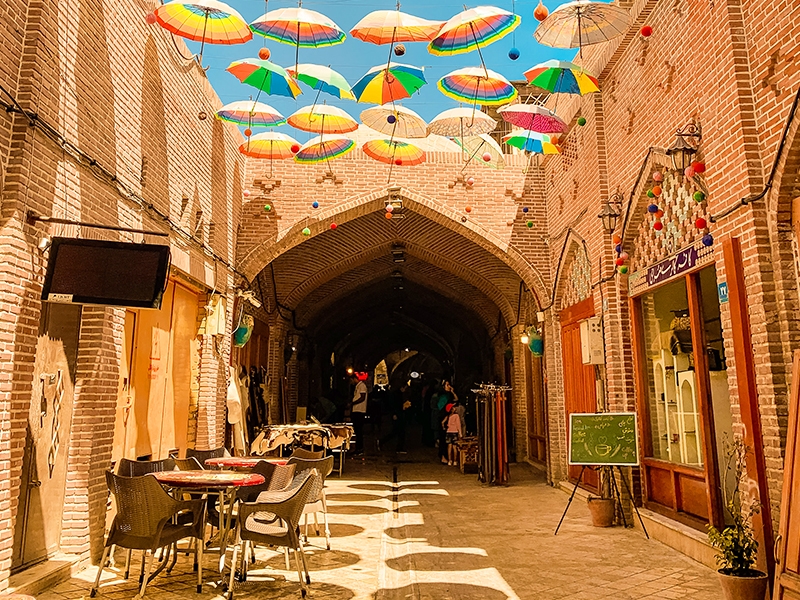
Tabriz Bazaar
The Tabriz Bazaar, located in the historic city ofTabrizin northwestern Iran, is one of the oldest and largest covered bazaars in the world. This ancient marketplace has been a center of commerce and culture for centuries, with its roots dating back to at least the 13th century, during the Safavid dynasty. Spanning approximately seven square kilometers, theTabriz Bazaaris a labyrinth of interconnected vaulted halls, caravanserais, and courtyards, each dedicated to specific goods and trades. The bazaar's architecture is a testament to Persian ingenuity, featuring stunning brickwork, intricate tile designs, and beautifully crafted domes that not only enhance its aesthetic appeal but also provide natural ventilation and lighting.
As you navigate through the bustling corridors of the Tabriz Bazaar, you will encounter an array of goods ranging from traditional Persian carpets, exquisite jewelry, and handwoven textiles to spices, dried fruits, and nuts. The carpet section of the bazaar is particularly renowned, as Tabriz has long been a center for high-quality carpet weaving, producing some of the most sought-after Persian rugs in the world. The bazaar also boasts numerous stores selling gold and silver jewelry, showcasing the craftsmanship and artistry of local artisans.
One of the unique features of the Tabriz Bazaar is its numerous mosques, madrasahs (Islamic schools), and hammams (public baths) integrated into its structure, reflecting its multifaceted role in the community. These institutions have historically served as centers for social, educational, and religious activities, fostering a sense of community and continuity within the bazaar. The Jameh Mosque of Tabriz, located within the bazaar, is a prime example of this integration, offering a serene place of worship amidst the bustling market activity.
The Tabriz Bazaar is not just a commercial hub but also a living museum that offers a glimpse into the rich cultural heritage of Iran. The bazaar has been recognized as a UNESCO World Heritage Site, a testament to its historical significance and cultural value. Visitors to the bazaar can experience the lively atmosphere, engage in friendly haggling with merchants, and enjoy the vibrant colors and scents that permeate the air. Traditional teahouses and eateries within the bazaar provide an opportunity to savor authentic Iranian cuisine, offering a perfect respite for weary shoppers.
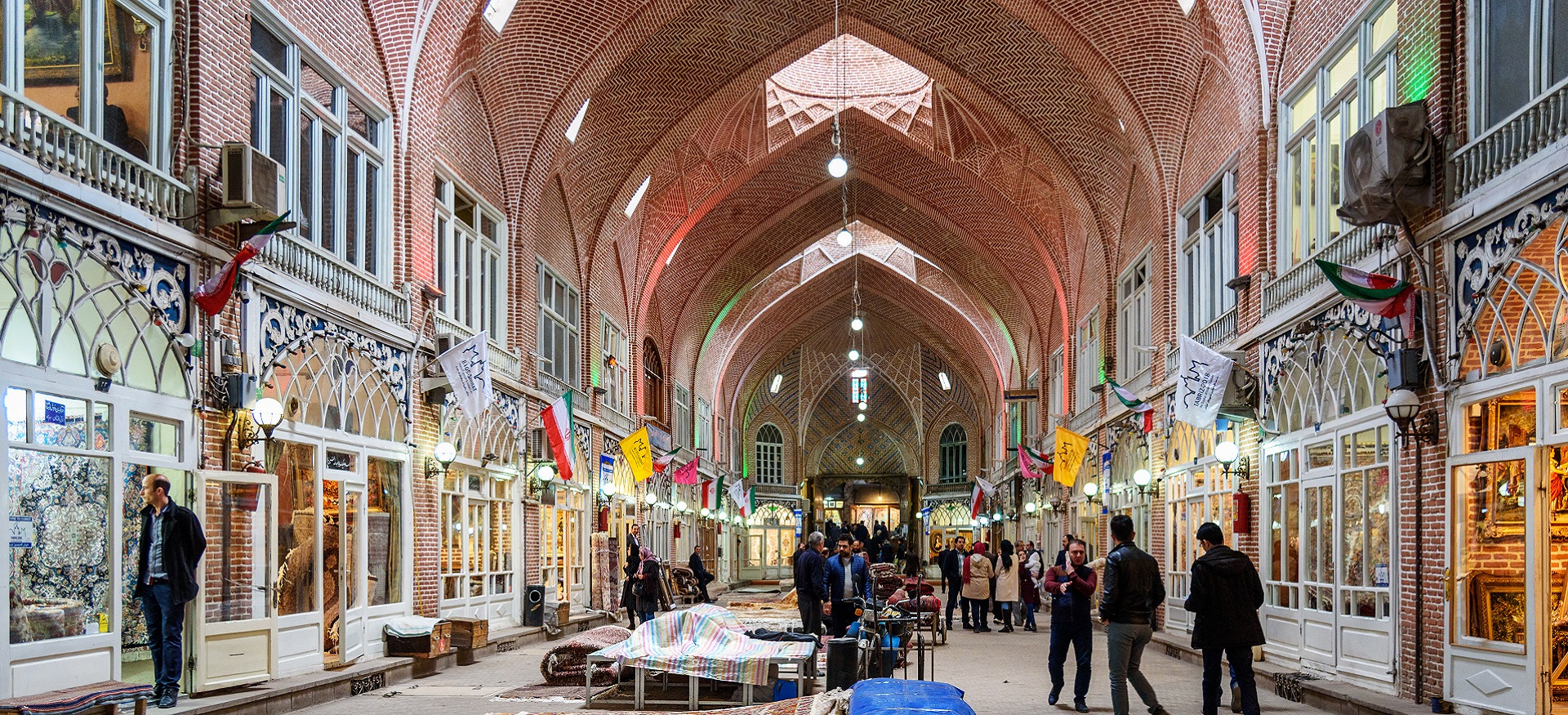
Ganjali Khan Bazaar in Kerman
The Ganjali Khan Bazaar inKerman, Iran, is a historical and architectural gem that dates back to the Safavid era in the 17th century. This magnificent bazaar is part of a larger complex known as theGanjali Khan Complex, which also includes a mosque, a bathhouse, a caravanserai, a mint, and a school, all commissioned by Ganjali Khan, the governor of Kerman during the reign of Shah Abbas I. The bazaar is renowned for its intricate design and historical significance, reflecting the rich cultural heritage of the region.
As you enter the Ganjali Khan Bazaar, you are immediately struck by the stunning architecture, characterized by beautiful brickwork, elegant arches, and intricate tile designs. The bazaar's layout is meticulously planned, with wide, vaulted corridors that create a sense of grandeur and spaciousness. Natural light filters through strategically placed skylights, illuminating the vibrant colors of the merchandise and enhancing the overall atmosphere of the market. The bazaar is divided into different sections, each dedicated to specific types of goods, such as textiles, spices, jewelry, and handicrafts. This division allows visitors to easily navigate and explore the diverse offerings of the market.
One of the standout features of the Ganjali Khan Bazaar is its central square, a bustling hub of activity surrounded by shops and vendors. This square serves as a focal point for the bazaar, where merchants and shoppers gather to trade goods and exchange stories. The vibrant atmosphere is further enhanced by the aroma of spices and the sound of vendors calling out their wares, creating a sensory experience that is both captivating and immersive.
The Ganjali Khan Bathhouse, located within the complex, is another highlight of the bazaar. This historic bathhouse is renowned for its exquisite architecture and detailed frescoes, depicting scenes from Persian mythology and everyday life. Visitors can explore the various sections of the bathhouse, including the dressing rooms, the hot and cold bathing areas, and the central pool, all meticulously restored to their original splendor.
In addition to its commercial and architectural significance, the Ganjali Khan Bazaar also holds a special place in the cultural and social life of Kerman. It serves as a gathering place for locals and visitors alike, fostering a sense of community and connection. The bazaar is a testament to the enduring spirit of Iranian culture, showcasing the craftsmanship, artistry, and hospitality that define the region.
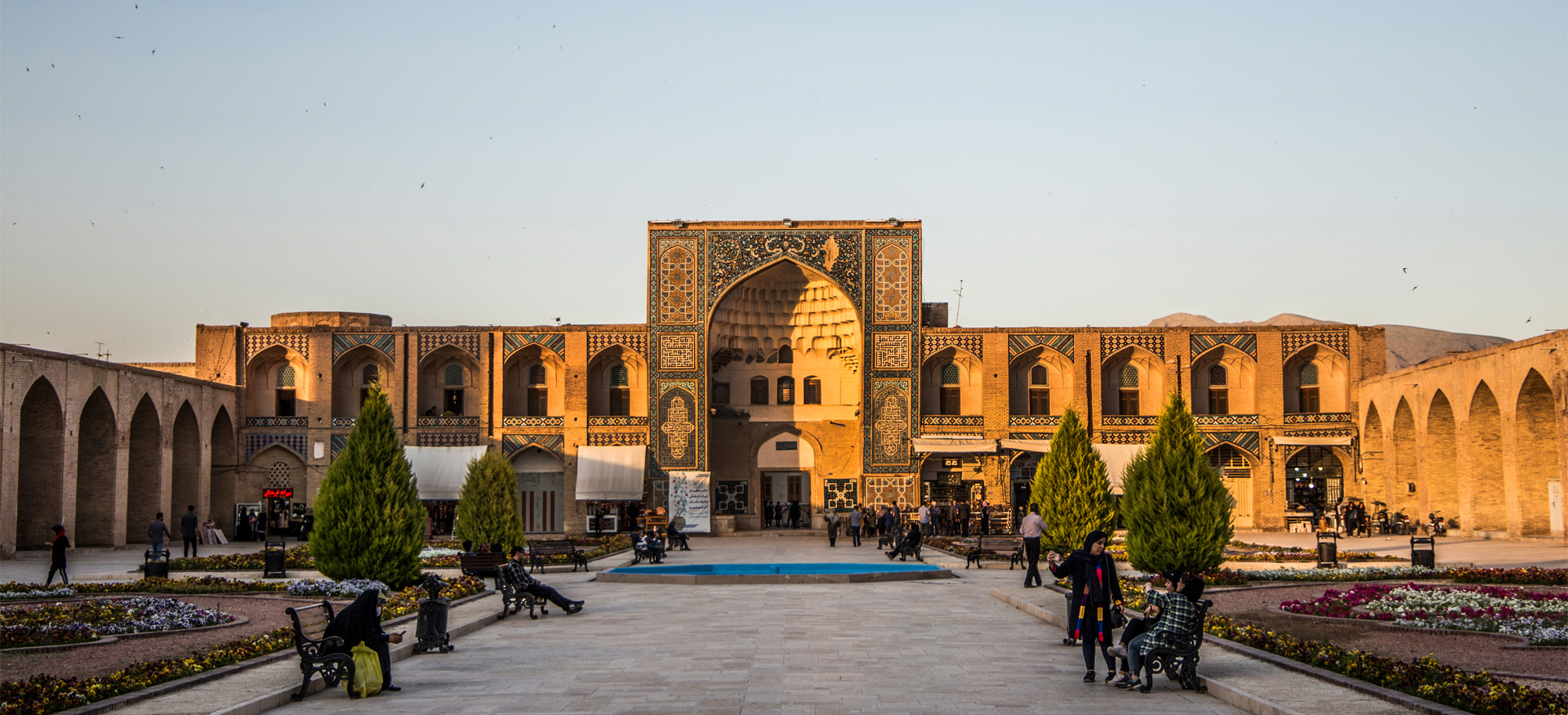
Minab Thursday Market
The Minab Thursday Market, also known as Panjshambe Bazaar, is a vibrant and bustling traditional market held weekly in the city of Minab, located in the Hormozgan Province of southern Iran. This market is renowned for its lively atmosphere and rich cultural significance, offering a unique glimpse into the local customs and traditions of the region. As the name suggests, the market operates every Thursday, attracting a diverse crowd of locals and visitors who come to trade, socialize, and experience the vibrant ambiance.
One of the most striking features of the Minab Thursday Market is its colorful and diverse array of goods. Vendors set up stalls selling everything from fresh produce, spices, and dried fruits to handmade crafts, textiles, and traditional clothing. The market is particularly famous for its selection of locally-grown fruits and vegetables, which are displayed in vivid, eye-catching arrangements. The aromatic spices and herbs add to the sensory experience, filling the air with their enticing scents. Traditional crafts and textiles, such as handwoven baskets, rugs, and garments, showcase the region's rich artisanal heritage and provide visitors with an opportunity to purchase unique, locally-made souvenirs.
In addition to its commercial offerings, the Minab Thursday Market serves as a significant social and cultural hub for the local community. It provides a space for people to come together, exchange news, and build connections. The market is a lively gathering place where the sounds of bargaining, laughter, and conversation create a dynamic and welcoming environment. The vendors, often dressed in traditional attire, add to the market's authenticity and charm, making it a truly immersive experience.
The market also features a variety of street food stalls, where visitors can sample authentic Iranian cuisine and local delicacies. From freshly baked bread and savory kebabs to sweet treats and refreshing beverages, the food offerings cater to a wide range of tastes and preferences. The culinary delights of the Minab Thursday Market provide a delicious complement to the shopping experience and offer a taste of the region's rich gastronomic culture.
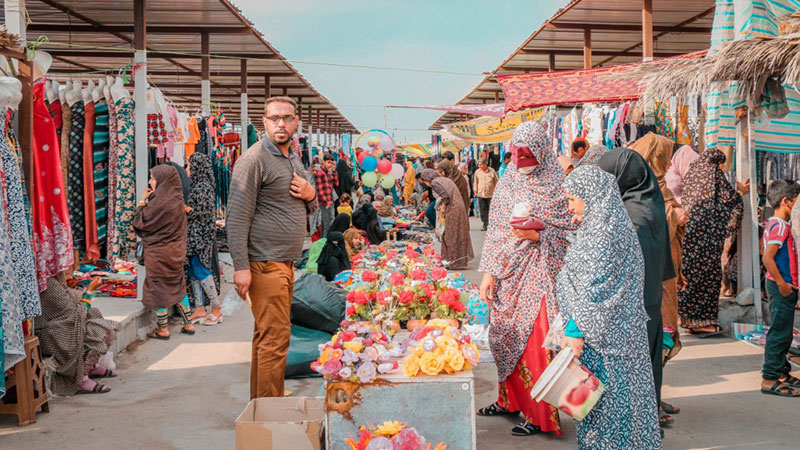
Qeisariyeh Bazaar of Isfahan
The Qeisariyeh Bazaar, also known as the Imperial Bazaar, is one of the most historically significant and architecturally stunning marketplaces in Iran. Located in the heart ofIsfahan, this grand bazaar dates back to the early 17th century during the Safavid era, commissioned by Shah Abbas the Great. It serves as a testament to the city's rich cultural heritage and its importance as a center of trade and commerce along the Silk Road.
The entrance to the Qeisariyeh Bazaar is marked by the magnificent Qeisariyeh Gate, an elaborate structure adorned with intricate tile work and frescoes depicting scenes of Safavid kings and battle victories. This grand entrance leads visitors into a labyrinth of vaulted passages and domed halls, each designed with meticulous attention to detail. The bazaar's architectural layout is both functional and aesthetically pleasing, providing a harmonious blend of beauty and practicality. Natural light filters through strategically placed openings in the ceilings, illuminating the vibrant array of goods on display while creating an inviting and pleasant atmosphere for shoppers.
Within the Qeisariyeh Bazaar, visitors can explore a wide variety of shops and stalls offering an impressive selection of goods, from traditional Persian carpets, textiles, and spices to gold, silver, and precious gemstones. The carpet section is particularly renowned, as Isfahan is known for producing some of the finest Persian rugs in the world. These carpets, with their intricate designs and high-quality craftsmanship, are sought after by collectors and connoisseurs globally.
One of the unique features of the Qeisariyeh Bazaar is the presence of numerous artisan workshops where skilled craftsmen and women practice traditional arts and crafts. Visitors can witness firsthand the creation of intricate miniatures, delicate pottery, and detailed metalwork. These workshops not only preserve the cultural heritage of Isfahan but also offer a fascinating glimpse into the meticulous processes involved in creating these masterpieces.
The bazaar is also home to several historic buildings and landmarks, including the majestic Sheikh Lotfollah Mosque and the Ali Qapu Palace, both of which are located near the bazaar's entrance. These architectural marvels, with their stunning tile work and grandiose design, add to the cultural and historical significance of the area.
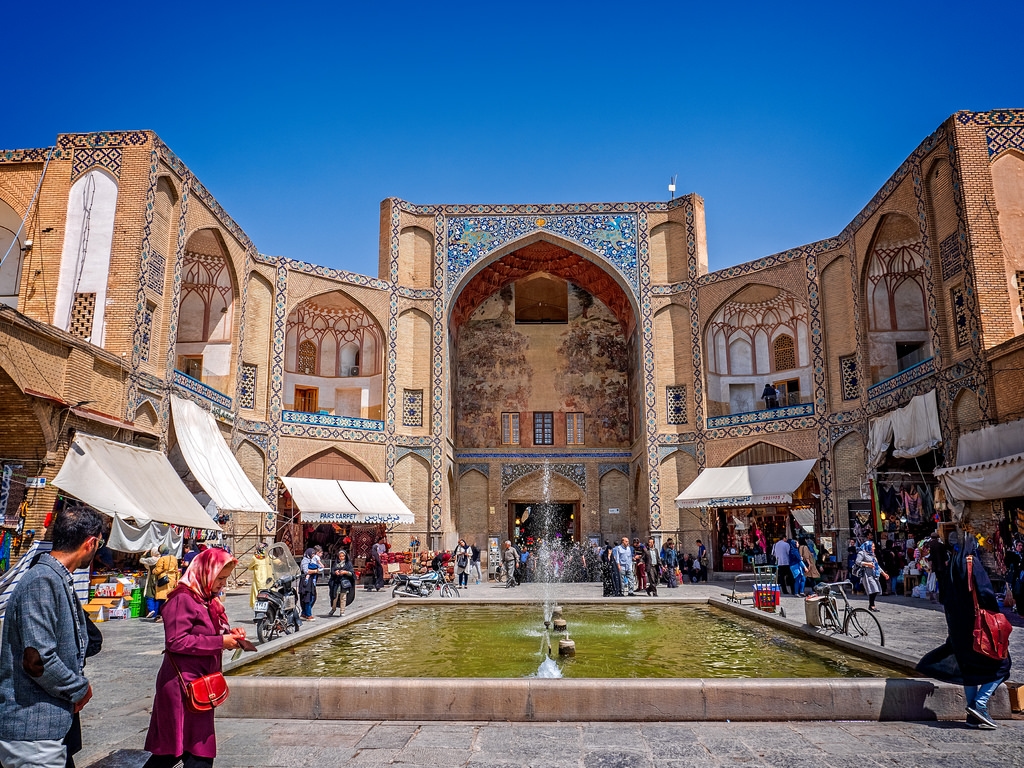
Rasht Bazaar
The Rasht Bazaar, located in the heart ofRasht, the capital city of Gilan Province in northern Iran, is a bustling and vibrant marketplace that has been a vital hub of commerce and social interaction for centuries. This traditional bazaar is renowned for its lively atmosphere, rich cultural heritage, and diverse array of goods, offering a unique glimpse into the daily life and traditions of the region. The bazaar spans several streets and alleys, creating a labyrinthine network of shops and stalls where vendors sell everything from fresh produce and seafood to handmade crafts and textiles.
One of the most striking features of the Rasht Bazaar is its emphasis on local produce and agricultural products. The fertile lands of Gilan Province are known for their abundant harvests, and the bazaar is a showcase for the region's bountiful offerings. Visitors can find an impressive variety of fruits, vegetables, herbs, and spices, all freshly harvested and displayed in vibrant, colorful arrangements. The aroma of fresh herbs and spices fills the air, creating a sensory experience that is both captivating and inviting.
Seafood is another highlight of the Rasht Bazaar, reflecting the city's proximity to the Caspian Sea. Fresh fish, shrimp, and other seafood delicacies are prominently featured, providing a taste of the local cuisine. The bazaar also offers a wide range of traditional Iranian dishes and snacks, allowing visitors to sample the rich flavors of Gilan's culinary heritage. Local specialties such as mirza ghasemi, a smoky eggplant dish, and baghali ghatogh, a fava bean stew, are popular choices among both locals and tourists.
In addition to its culinary delights, the Rasht Bazaar is a treasure trove of handmade crafts and textiles. Artisans from across the region bring their wares to the bazaar, including handwoven carpets, intricate pottery, and colorful textiles. These items showcase the skilled craftsmanship and artistic traditions of Gilan Province, making them popular souvenirs for visitors.
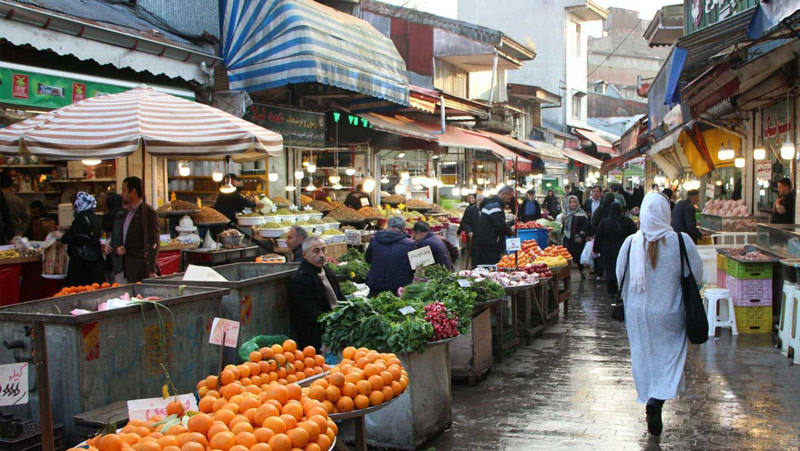
Vakil Bazaar in Shiraz
The Vakil Bazaar in Shiraz is one of Iran's most famous and historically significant marketplaces, showcasing the rich cultural and architectural heritage of the region. Built during the Zand dynasty in the 18th century by the order of Karim Khan Zand, the founder of the dynasty, Vakil Bazaar remains a bustling hub of commerce and social activity in the heart ofShiraz. The bazaar's design reflects the Zand era's architectural prowess, featuring wide vaulted corridors, beautifully decorated arches, and intricate tile work that create an atmosphere of grandeur and elegance.
Spanning several kilometers, Vakil Bazaar is a maze of interconnected alleys and courtyards, each dedicated to different types of goods. Visitors can explore sections specializing in Persian carpets, textiles, spices, jewelry, and traditional handicrafts. The carpet section is particularly renowned, offering some of the finest Persian rugs known for their intricate patterns and exquisite craftsmanship. In the spice section, the air is filled with the enticing aromas of saffron, cinnamon, and other exotic spices, providing a sensory delight for visitors. The bazaar also features a variety of shops selling handwoven fabrics, pottery, metalwork, and other local handicrafts, making it a perfect place to find unique souvenirs and gifts.
One of the standout features of the Vakil Bazaar is its central Vakil Bathhouse, a beautifully preserved example of traditional Persian bathhouse architecture. The bathhouse, with its elaborate tile work, vaulted ceilings, and marble floors, offers a glimpse into the bathing customs and social life of the Zand era. Visitors can explore the various sections of the bathhouse, including the dressing rooms, hot and cold bathing areas, and the central pool, all meticulously restored to their original splendor.
Adjacent to the bazaar is the Vakil Mosque, another architectural masterpiece from the Zand period. The mosque's stunning façade, with its intricate tile work and grand entrance, adds to the bazaar's overall charm and historical significance. The mosque's serene courtyard and beautifully decorated prayer hall provide a peaceful retreat from the bustling market outside.
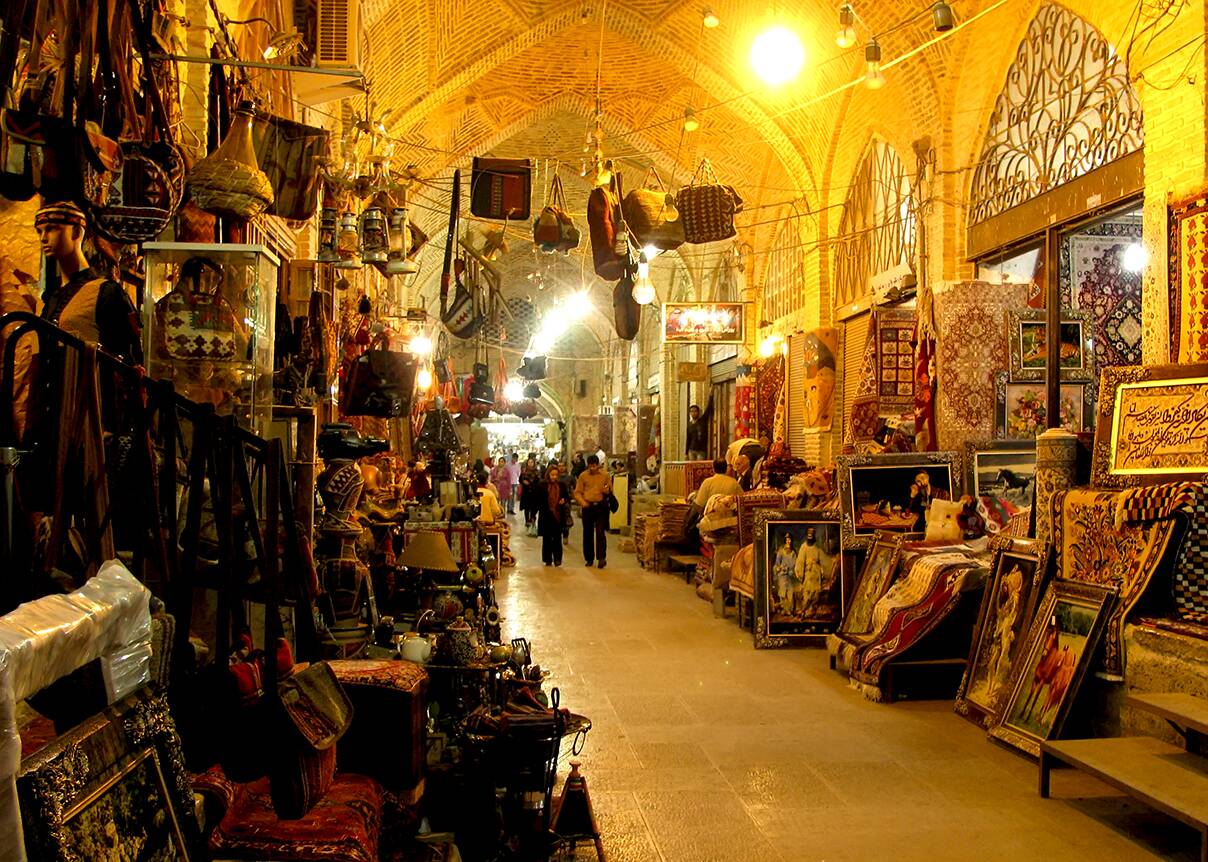
Bazaar of Kashan
The Bazaar of Kashan, located in the historic city of Kashan in central Iran, is a captivating marketplace steeped in history and cultural significance. Dating back to the Safavid period, this bazaar is not only a center of commerce but also a reflection of the architectural and artistic heritage of Iran. The bazaar extends over a considerable area, featuring a labyrinth of narrow, winding alleys, vaulted passages, and beautifully decorated caravanserais. The intricate design of the bazaar, with its stunning domes, arches, and tile work, creates an atmosphere of grandeur and timelessness, making it a must-visit destination for anyone exploring Kashan.
One of the most iconic features of the Bazaar of Kashan is the Timcheh-ye Amin-o-Dowleh, a historic caravanserai built in the late 19th century. This magnificent structure is renowned for its intricate tile work, lofty domes, and exquisite stucco decorations. The central courtyard, surrounded by shops and trading rooms, provides a serene and picturesque setting, showcasing the exceptional craftsmanship of the era. The Timcheh-ye Amin-o-Dowleh remains a bustling hub of activity, where traders and artisans offer a diverse range of goods, from traditional Persian carpets and textiles to spices, herbs, and handmade crafts.
As visitors meander through the bazaar, they are greeted by a sensory feast of sights, sounds, and scents. The air is filled with the aroma of exotic spices, freshly baked bread, and fragrant herbs, while the vibrant colors of the merchandise create a visually stunning display. The carpet section of the bazaar is particularly famous, offering some of the finest Persian rugs, known for their intricate designs and high-quality craftsmanship. Kashan has a long-standing tradition of carpet weaving, and the bazaar provides an ideal setting to appreciate and purchase these exquisite works of art.
In addition to its commercial offerings, the Bazaar of Kashan is home to several historic mosques, bathhouses, and religious schools, each adding to the cultural richness of the market. The Agha Bozorg Mosque, with its impressive architecture and tranquil courtyard, is one of the notable landmarks within the bazaar. This mosque, along with other religious sites, serves as a reminder of the bazaar's multifaceted role in the social, religious, and cultural life of Kashan.
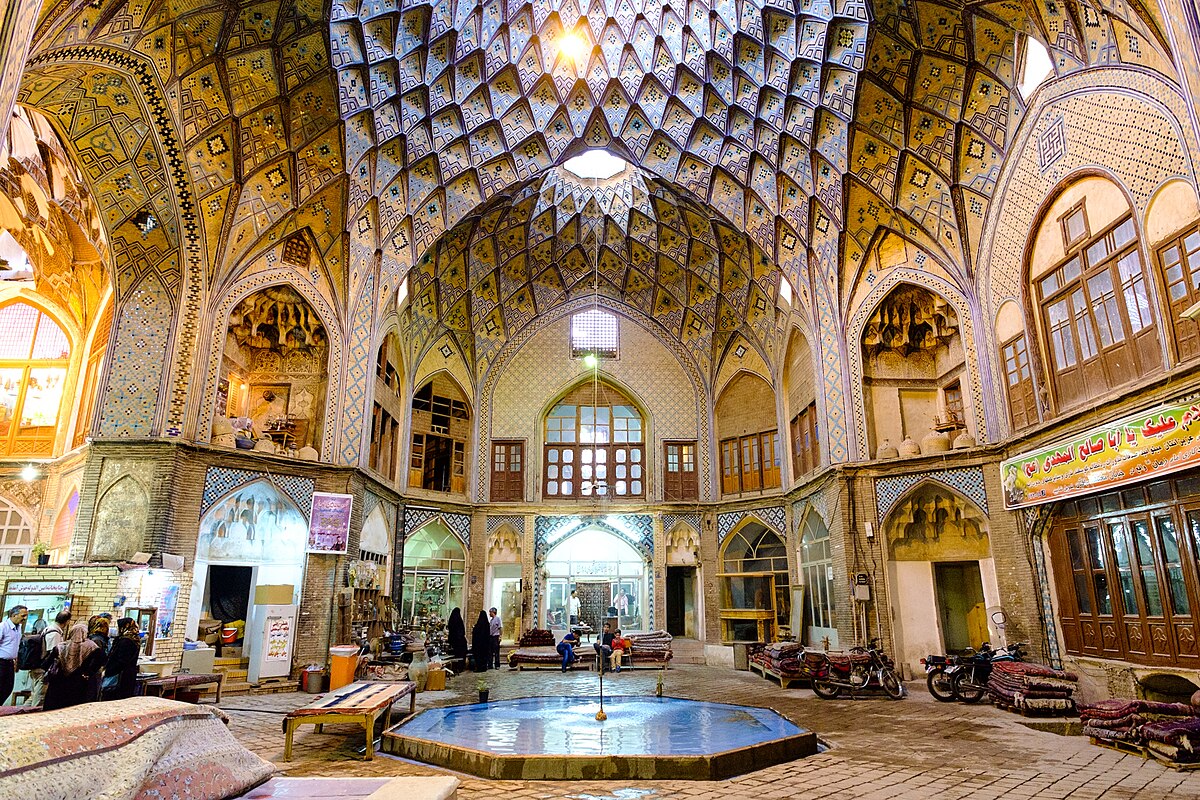
Qazvin Bazaar
The Qazvin Bazaar, located in the historic city of Qazvin in northwestern Iran, is a vibrant marketplace that has been a cornerstone of trade, culture, and social interaction for centuries. This bazaar, which dates back to the Safavid era in the 16th century, is an architectural masterpiece showcasing the rich cultural heritage of the region. The bazaar is an intricate network of narrow alleys, vaulted corridors, and spacious courtyards, each teeming with merchants selling a diverse array of goods. From traditional Persian carpets, textiles, and spices to jewelry, household items, and artisanal crafts, the bazaar offers a sensory overload of sights, sounds, and smells that captivate visitors.
One of the most notable features of the Qazvin Bazaar is its stunning architecture, which reflects the craftsmanship and ingenuity of the Safavid period. The bazaar is adorned with beautiful tile work, intricate brick patterns, and elegant arches that create an atmosphere of grandeur and historical significance. The Sa'd al-Saltaneh Caravanserai, located within the bazaar, is a prime example of this architectural splendor. Built in the late 19th century, this well-preserved caravanserai features a large central courtyard surrounded by arched chambers and rooms, serving as a bustling hub for traders and travelers.
The Qazvin Bazaar is divided into different sections, each specializing in specific types of goods. The carpet section is renowned for its exquisite Persian rugs, known for their intricate designs and high-quality craftsmanship. The spice market is a sensory delight, with the rich aromas of saffron, cinnamon, and other exotic spices filling the air. The bazaar also features numerous shops selling traditional handicrafts, such as pottery, metalwork, and woven textiles, providing a glimpse into the region's artisanal heritage.
The Qazvin Bazaar is not just a place of trade but a living museum that offers a window into the rich history and traditions of the region. Its architectural beauty, diverse array of goods, and vibrant atmosphere make it a must-visit destination for anyone exploring Qazvin. Whether you are shopping for unique souvenirs, admiring the craftsmanship of local artisans, or simply soaking in the historical ambiance, the Qazvin Bazaar provides an unforgettable experience that captures the essence of Iranian culture and heritage.
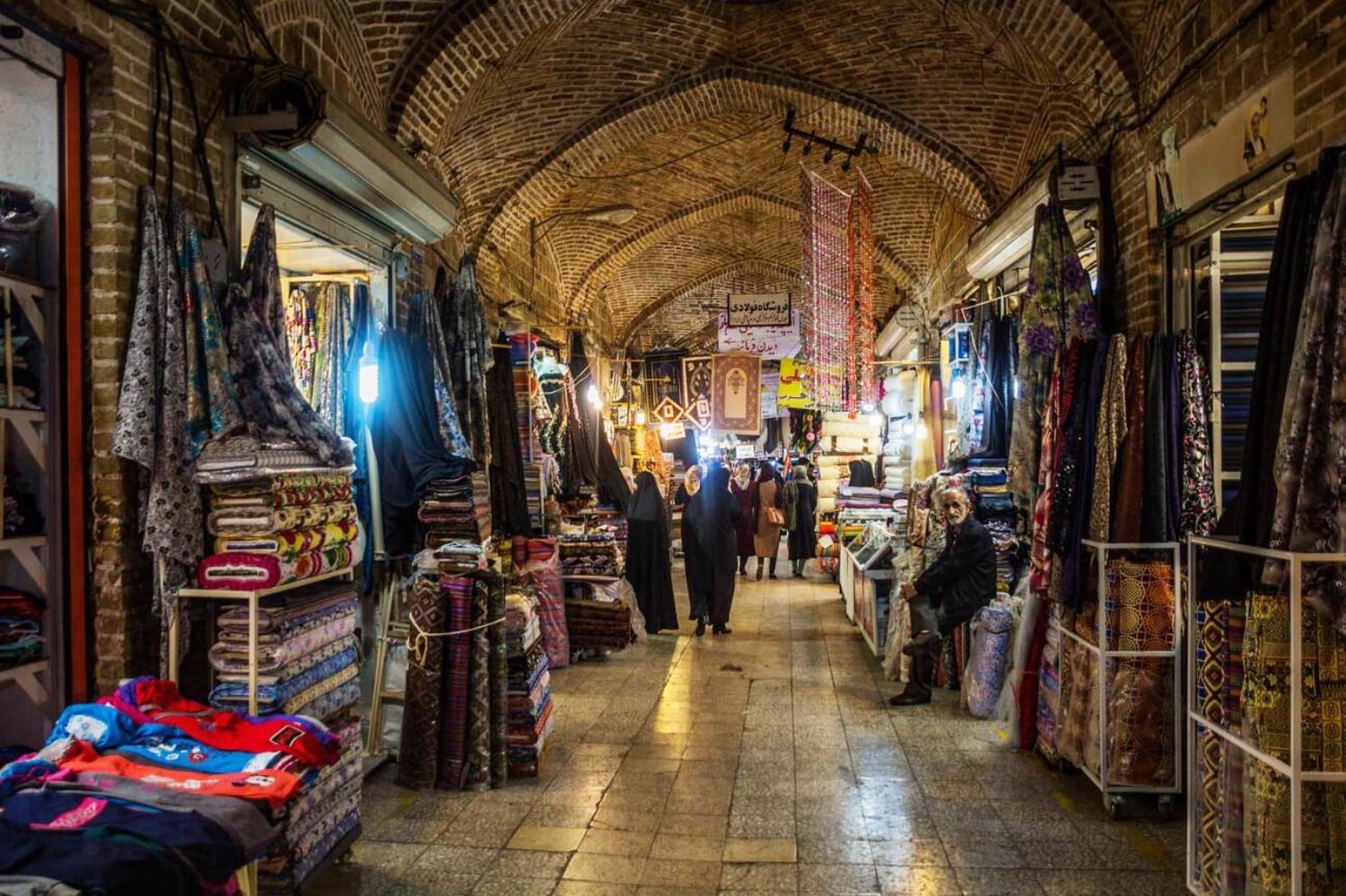
Qom Bazaar
The Qom Bazaar, located in the holy city ofQom, Iran, is a vibrant and historically significant marketplace that has played a central role in the city's commerce and culture for centuries. Qom, known as a major center for religious studies and pilgrimage, attracts visitors from all over the world, and the bazaar serves as a bustling hub where both locals and pilgrims converge. The bazaar's architecture reflects its long-standing history, featuring narrow alleys, vaulted ceilings, and beautifully adorned arches that create a timeless and enchanting atmosphere.
Spanning a considerable area, the Qom Bazaar is divided into various sections, each specializing in different types of goods. Visitors can find an array of traditional Persian carpets, textiles, spices, jewelry, and religious items. The carpet section is particularly noteworthy, offering a selection of exquisite Persian rugs known for their intricate patterns and high-quality craftsmanship. These carpets, often handwoven by skilled artisans, are highly prized both locally and internationally.
One of the unique aspects of the Qom Bazaar is its focus on religious items and artifacts. Given Qom's status as a religious center, the bazaar is replete with shops selling items such as prayer beads, religious books, and tapestries depicting Islamic calligraphy and motifs. These items are popular among pilgrims and visitors who seek to take home a piece of Qom's spiritual heritage.
The spice market is another highlight of the Qom Bazaar, where the air is filled with the rich aromas of saffron, cinnamon, and other exotic spices. The vibrant colors and enticing scents create a sensory experience that is both captivating and memorable. Additionally, the bazaar offers a variety of handmade crafts and textiles, including handwoven fabrics, pottery, and metalwork, showcasing the region's rich artisanal traditions.
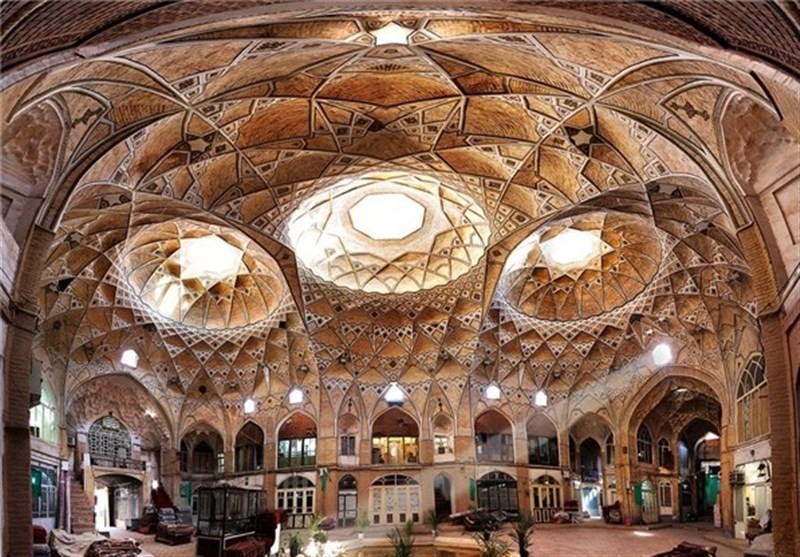
Conclusion
In conclusion, Iran's historical bazaars stand as vibrant testaments to the country's rich cultural heritage and dynamic history. They encapsulate centuries of tradition, trade, and artistry, offering an immersive experience where history and modernity blend seamlessly. Exploring these bazaars is like stepping back in time, allowing visitors to connect deeply with Iran's past and appreciate the enduring legacy of its market culture. Whether it's the aromatic spices, the exquisite craftsmanship of Persian rugs, or the lively interactions between traders and shoppers, Iran's bazaars are a sensory and cultural delight that continues to enchant both locals and travelers from around the world.
Read More